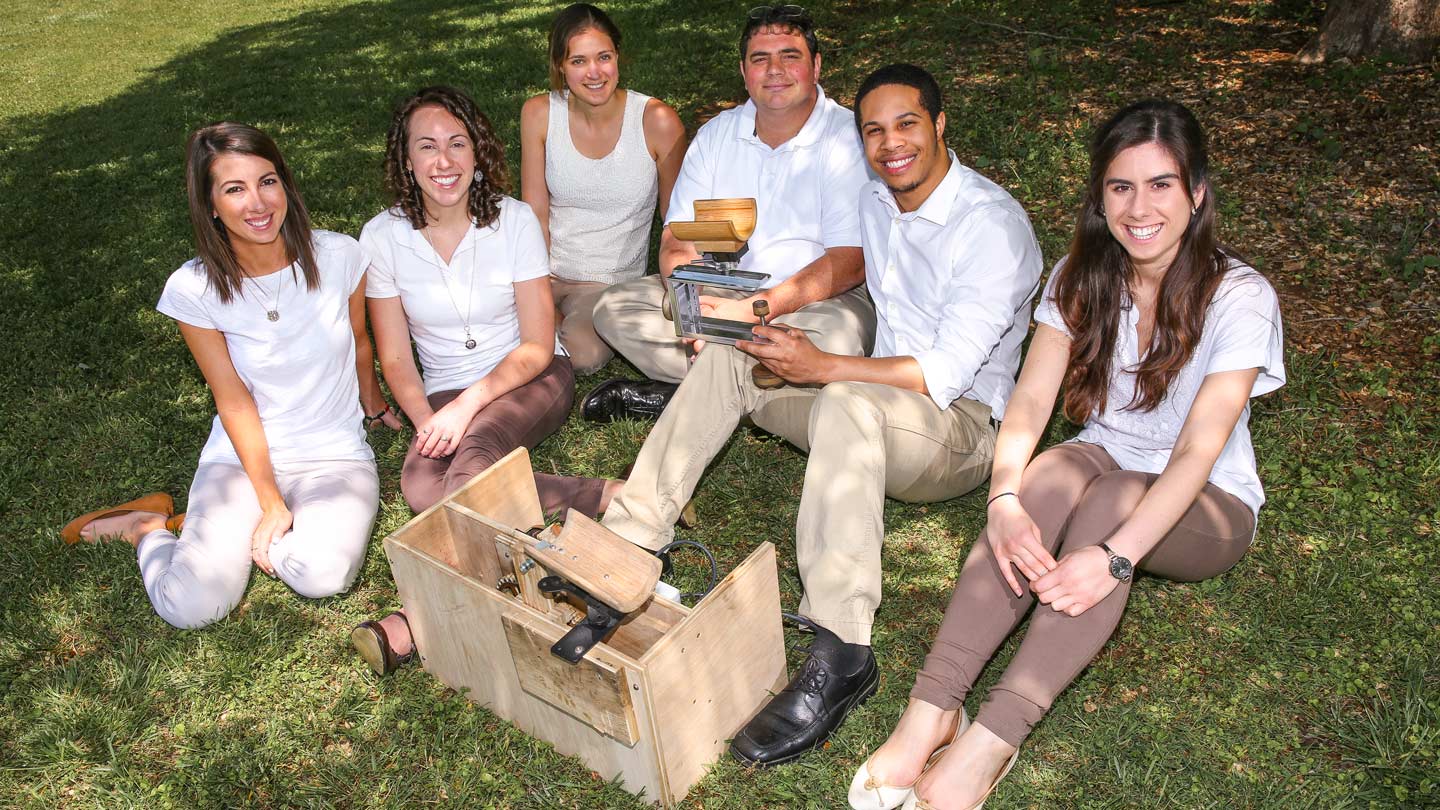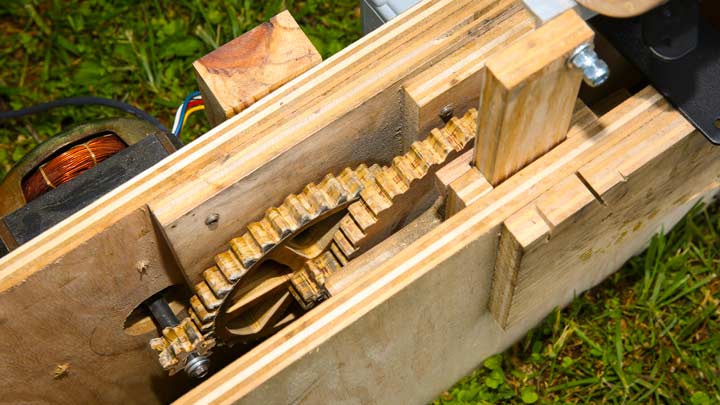
Mobile Arm Support System developers are, from left, Madison Howard, Stephanie Shelton, Erin Looney, Randall Hajjar, Nicholas Ward and Giulia Palma.
Michael Mercier | UAH
An arm support designed and produced by a six-member University of Alabama in Huntsville (UAH) senior Capstone Design team gives cerebral palsy patients better hand and lower arm control to write, feed themselves, hold objects or perform other daily tasks.
The North Alabama American Society of Mechanical Engineers (ASME) funded development of the Mobile Arm Support System (MAS) for its final customer, physical therapist Janet Taylor at the United Cerebral Palsy (UCP) Center in Huntsville. Completed and tested MAS devices are in use at UCP's physical therapy department.
"We have provided her with three MAS systems so she is able to loan two of them for patients to take home for therapy," says team lead Stephanie Shelton, an aerospace engineering major who will begin working at NASA in Houston this fall and has been accepted to present a paper detailing how her team used the NASA Engineering Design Process in the development of the arm support to the International Astronautical Congress (IAC) in Jerusalem this fall.
Shelton, from Huntsville, is the only aerospace engineering major on the four female, two male team. All other team members are mechanical engineering majors. They are:
- Erin Looney, technical lead, from Huntsville;
- Randall Hajjar, manufacturing lead, from Birmingham;
- Giulia Palma, operations lead, from Rome, Italy;
- Nicholas Ward, Computer Aided Design (CAD) lead, from Brooklyn, N.Y.;
- Madison Howard, customer liaison, from Miami, Fla..
The team's first hurtle was to understand the physical difficulties cerebral palsy patients face. The NASA Systems Engineering Handbook guided the students as their deliverables went through several technical reviews. The product came in on time and under budget.

Randall Hajjar built the team’s accelerated-life test stand, including hand-cutting the gears from plywood.
Michael Mercier | UAH
"Some of us came into this class with very little design and production experience, so working through that with more experienced team members was a valuable process," says Looney, the technical lead. "We went through major design phases - such as conceptual, preliminary, detailed and final designs - using tools including decision matrices, N^2 diagrams and functional flow block diagrams."
Team member Hajjar designed, fabricated and built a motorized accelerated-life test stand that subjected the support to the equivalent of five years of use.
"For production, our team was lucky enough to include a genuinely talented manufacturer who has spent years working as a carpenter," Looney says. "He fashioned a wooden arm rest and knobs as well as cast an aluminum tensioner in his back yard."
Shelton says the team is thankful to Dr. Christina Carmen, a lecturer in UAH's Dept. of Mechanical and Aerospace Engineering, for finding and obtaining the funds for the project.
"This was an incredible experience, to design and build something to benefit and enhance other peoples lives," Shelton says. "It is not often that an engineer gets to interact with the people that benefit from a product, and it is a valuable lesson to see what an impact engineering can make in the community."
This the first project in the Capstone Design class that has a biomechanical aspect to it, says Dr. Carmen.
"Over the years, I have tried to incorporate more altruistic/humanitarian projects within my class, as studies have shown that females are drawn more to engineering projects of this nature," Dr. Carmen says. "This team was able to interact one-on-one with UCP patients in order to understand their physical needs and the required ergonomic aspects of the arm support."